Causal Discovery for Feature Selection in Physical Process-Based Hydrological Systems
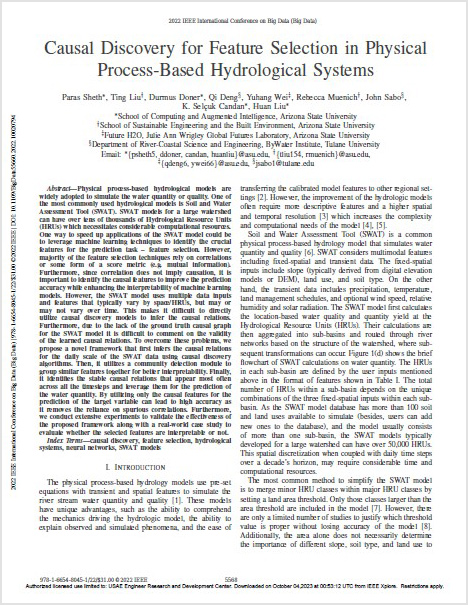
Physical process-based hydrological models are widely adopted to simulate the water quantity or quality. One of the most commonly used hydrological models is Soil and Water Assessment Tool (SWAT). SWAT models for a large watershed can have over tens of thousands of Hydrological Resource Units (HRUs) which necessitates considerable computational resources. One way to speed […]
Jointly advancing infrastructure and biodiversity conservation

Infrastructure development and biodiversity conservation are often planned and executed in isolation. However, outcomes from these efforts are interlinked, with coordinated actions required to jointly address sustainability challenges. Natural infrastructure — encompassing a spectrum of natural to conventional solutions — is key to the infrastructure–biodiversity connection and should be brought into large-scale application.
Nature Based Solutions for Department of the Navy in the Desert Southwest
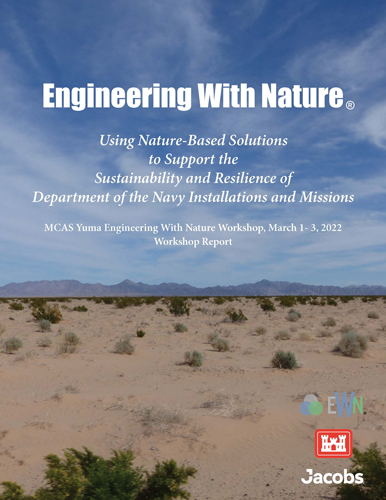
This report highlights the unique challenges and opportunities for utilizing NBS at Department of Defense (DoD) installations in the Desert Southwest. The proposed solutions highlighted in this report use NBS to harness the power of nature to support mission sustainment and resilience in the harsh, arid climate of the Desert Southwest. At the same time, […]
What evidence exists on the ecological and physical effects of built structures in shallow, tropical coral reefs? A systematic map protocol
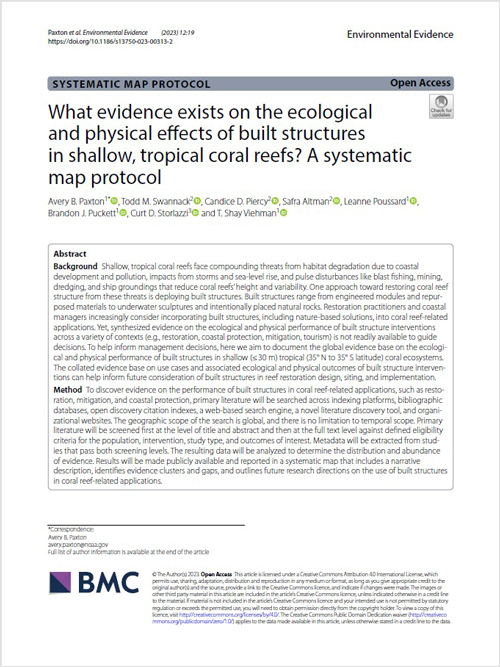
Background: Shallow, tropical coral reefs face compounding threats from habitat degradation due to coastal development and pollution, impacts from storms and sea-level rise, and pulse disturbances like blast fishing, mining, dredging, and ship groundings that reduce coral reefs’ height and variability. One approach toward restoring coral reef structure from these threats is deploying built structures. […]
Proceedings from the US Army Corps of Engineers (USACE) 2021 Beneficial Use of Dredged Material Virtual Workshop
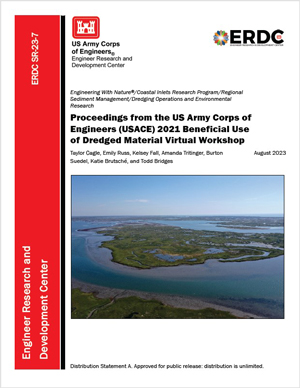
Engineering With Nature proudly co-hosted the inaugural Beneficial Use of Dredged Material Workshop, which aimed to address challenges hindering increased beneficial use (BU) of dredged material within the US Army Corps of Engineers (USACE). The workshop brought together representatives from USACE divisions, districts, and research programs. Key topics of discussion included the current state of […]
The Use of Native Vegetation for Structural Stability in Dredged Material Placement Areas: A Case Study of Beneficial Use Site 4A, Chocolate Bayou, Brazoria County, Texas
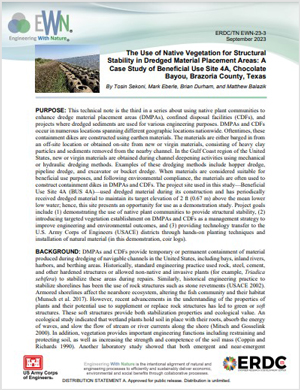
This technical note is the third in a series about using native plant communities to enhance dredge material placement areas (DMPAs), confined disposal facilities (CDFs), and projects where dredged sediments are used for various engineering purposes. DMPAs and CDFs occur in numerous locations spanning different geographic locations nationwide. Oftentimes, these containment dikes are constructed using […]
The use of native vegetation and natural materials in shoreline stabilization : a case study of Bubble Gum Beach, Rehoboth Beach, Delaware
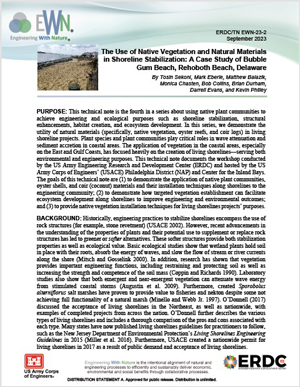
This technical note is the fourth in a series about using native plant communities to achieve engineering and ecological purposes such as shoreline stabilization, structural enhancements, habitat creation, and ecosystem development. In this series, we demonstrate the utility of natural materials (specifically, native vegetation, oyster reefs, and coir logs) in living shoreline projects. Plant species […]
Coastal Edition: Nature-Based Solutions for Biodiversity
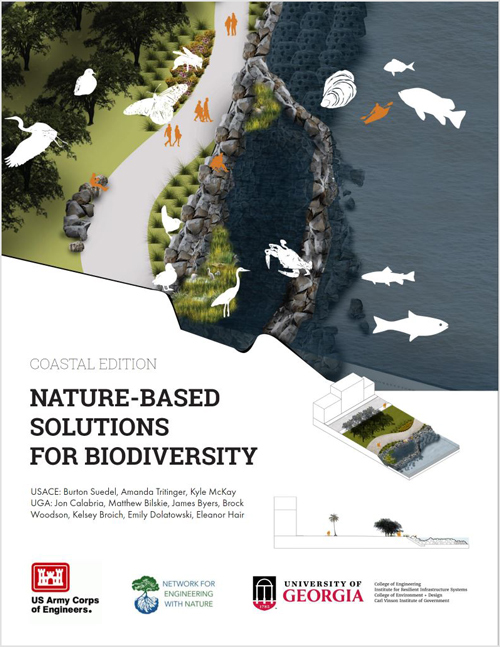
As shorelines change and infrastructure ages, communities may be faced with how to strengthen their shoreline or protect against flooding. Landscape architecture can play a meaningful role in each step of the process for implementing nature-based infrastructure: scoping, decision-making, implementation, and operations.
Evaluating restoration success in a Great Lakes embayment: A case studyfor addressing beneficial use impairments

Aquatic habitats within the St. Louis River estuary were impacted when developing the Duluth-Superior Harbor (MN/WI USA) and through decades of unregulated industrial and municipal discharge. An effort to remediate and restore sediment quality in the harbor began by implementing projects designed to address Beneficial Use Impairments (BUI) identified in this Area of Concern. Habitat […]
Dredged material can benefit submerged aquatic vegetation (SAV) habitats
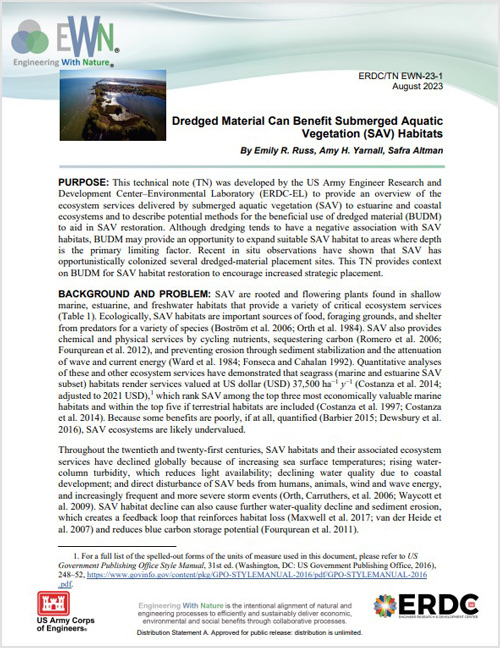
This technical note (TN) was developed by the US Army Engineer Research and Development Center–Environmental Laboratory (ERDC-EL) to provide an overview of the ecosystem services delivered by submerged aquatic vegetation (SAV) to estuarine and coastal ecosystems and to describe potential methods for the beneficial use of dredged material (BUDM) to aid in SAV restoration. Although […]

